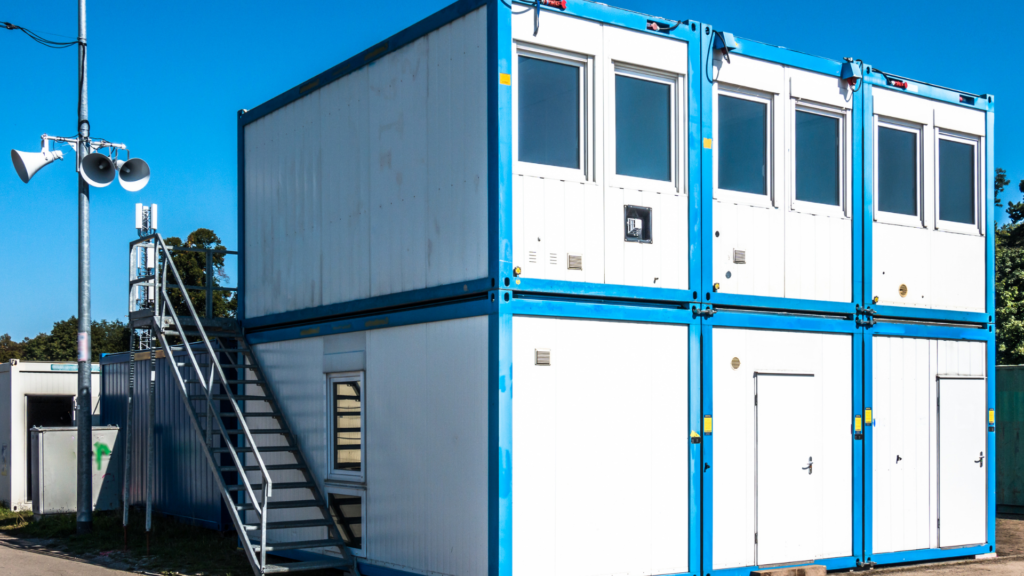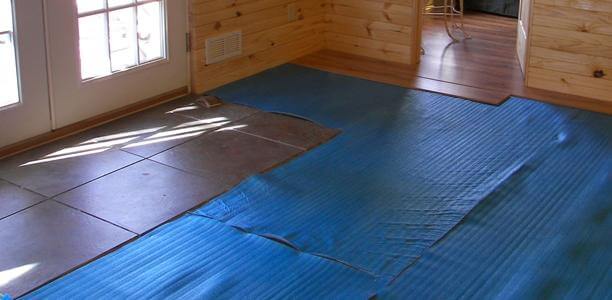Views: 27
Container Homes - Are they dangerous to live in?
Lots of people come to our site and see shipping container homes and fall in love with how incredible they look and also how affordable they are. But they always want to know if living in a shipping container home is safe.
We get emails from mothers asking if a shipping container home is safe for her family to live in. We also get emails from people who want to build a shipping container cabin to use in the wilderness and want to know if it’s safe from people breaking into it.
So today we’re going to look at exactly how safe shipping container homes are and whether you should be thinking about living in one.
Do Shipping Container’s Contain Harmful Chemicals?
The most common safety question people ask is whether shipping containers have harmful chemicals? I think a lot of these concerns come from a well-written article by Brian Pagnotta at Arch Daily on the advantages and disadvantages of living in a shipping container home.
The article highlights two key concerns:
- Wooden floors used in the majority of shipping containers are treated with hazardous chemicals such as pesticides
- Some shipping containers are coated in paint which contains harmful chemicals such as phosphorous and chromate
Brian rightly raises these concerns. But, like most things, there is more to this than first meets the eye.
If you are purchasing and building your home with new shipping containers, and you’re ‘ordering them direct’ from Asia, then you don’t need to worry about these concerns. You can just specify to the manufacturer that they don’t treat the floors and don’t coat the shipping containers with hazardous paint.
However, using new shipping containers to build your home does increase the cost. It also depletes the environmental kudos you would gain through constructing with used shipping containers.
Now we need to address second-hand shipping containers. If you purchase your containers second-hand, then there is a good chance that Brian’s concerns hold true for your containers. They will very likely have been treated with these harmful chemicals. What, if anything, can be done about that?
First, you can contact the original manufacturer of the container and inquire whether the floors have been treated with hazardous chemicals. To do this, use your shipping containers unique identification number to track who manufactured the container. For more information about that, read this article here.
We spoke with Larry from Sea Container Cabin who converted his used shipping containers back in 2010. To protect himself from the chemicals sprayed on the wooden floor he used a non-breathable flooring underlayment (see below).
Courtesy of Larry Wade
This underlayment was laid straight over the original wooden flooring. The tiles were then positioned on top of the underlayment.
If you want to be completely sure, you could even remove the original wooden flooring and replace it with marine plywood from your local hardware store.
Harmful Paint Coatings
There can be toxic paint coatings used on second-hand containers. This coating is to protect the container from saltwater while they are in transit across the ocean. It’s vital for containers when they are being used to transport cargo, but obviously not great when we are using these containers to build homes. The danger is usually not from off-gassing, but from physical contact with the paint.
The first thing to do is to contact the manufacturer of your shipping container and find out exactly what paint has been used.
If your containers have been coated with harmful chemicals, it is usually best to either remove the coating or encapsulate it with something else. Spray foam insulation or non-toxic paint are usually adequate for this purpose.
Are Shipping Container Homes Hurricane Proof?
We’ve received emails from several people who live in natural disaster hotspots, asking if shipping container homes can withstand hurricanes.
These questions are no doubt inspired from the photos we have seen of hurricane Katrina. In the photos, it shows wooden homes which have been completely annihilated by Katrina, however lying on top of the wood are completely intact shipping containers.
We are not currently aware of any shipping container home which has faced a hurricane, we certainly know that shipping containers can withstand hurricanes.
We have already spoken about Todd Miller’s shipping container home in our Graceville Container House Case Study. For those of you not aware, he decided to build a shipping container home using 31 containers!
The home was placed on nine meter deep micro-pile foundations, the piles were capped with concrete piers and the containers were then anchored down on top of these concrete piers. The house was featured on Grand Designs Australia. While it’s hard to say any structure is completely hurricane proof, as we never know the extent of future ‘super storms’, this home is very hurricane resistant due to the foundations and anchoring used.
What is also interesting about this example is that he built his home in known flood plains in Queensland. The local planning authority approved the home to be built in this area because in Todd’s plans it showed that the home was floodproof.
Are Shipping Container Homes Secure?
We have received this question a surprising number of times. Often, the future owners are planning on using them as a cabin in the wilderness. Hence, they want to be able to leave their shipping container home for months on end without having to worry about whether someone has broken into it.
To answer this question, consider what a shipping container was originally built to do. Shipping containers are made to be an airtight, impenetrable storage solution used to transport goods around the world.
In fact, when shipping containers were first used in the 1950’s, the amount of lost or stolen cargo dropped significantly, as we discussed in A Complete History of the Shipping Container.
Before shipping containers, goods were placed on ships as break bulk cargo. This essentially means goods were either in sacks, crates or barrels. Light-handed laborers were known to steal these goods. At the time it was known as the cost of shipping. However, when shipping containers came on the scene, the number of stolen goods dropped massively. This was because shipping containers could be locked by the owner before they were even loaded onto the ship.
Shipping containers are one of the most secure storage facilities you will come across. However, when people convert the container into a home, they often cut away metal and change the structure of the container, which does lessen its security value somewhat. But a shipping container converted into a home is just as secure as a traditionally built home.
If you want to make your shipping container home even more secure because you plan to use it in a remote location, you should leave the original structure of the container intact.
To do this you would need to fit windows and doors behind the original shipping container doors. This way when you leave your shipping container home, you can also lock the original shipping container door to seal your container up.
When you are staying over in your cabin, you can leave the original shipping container doors open to let light in, yet you will still have your retrofitted windows and door closed, like a regular house.
Now that you know how safe shipping container homes are to live in, what are you waiting for? Let us know what you use your shipping container home for in the comments section below.







